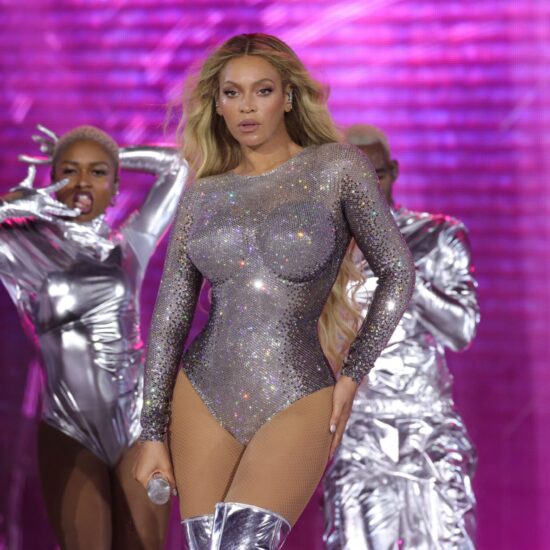
We’ve had genies of the playful, wish-granting “Thief of Baghdad” type, and more recently quite a number of evil djinn in horror movies. But it’s hard to recall a prior screen portrait of the same malleable Arabic mythological creatures quite like “HWJN,” which takes the cuddlesome, anthropomorphic “They’re just like us, only magical!” view of Pixar animations and such in depicting modern-day jinn (the term’s more accurate translation) who invisibly live alongside humans.
Yasir Alyasiri’s visually appealing fantasy, which kicked off the Red Sea Film Fest, is at times too innocuous in tone and pedestrian in story ideas. But it’s nonetheless a slick, pleasant diversion that should attract viewers eager for an approximation of CGI-heavy western family entertainments, albeit with up-front Arabic cultural and Muslim religious emphases. The Saudi Arabia-United Arab Emirates coproduction opens commercially in S.A. on Jan. 4.
Drawn from sci-fi author Ibraheem Abbas’ popular (if sporadically banned) series of novels, which began publishing a decade ago, this amiable whimsy starts off its world-building immediately in the most straightforward terms. Our narrating protagonist Hawjan (Baraa Alem) is introduced watching a traditional “evil genie” film in a cinema. He protests such stereotypes, insisting that real jinn “have jobs, families and family drama,” just like the humans they co-exist with. Only the humans don’t know it, because “God separated our worlds for a reason of which He knows best,” rendering jinn capable of seeing humans but not vice versa. Interaction between the two is difficult, and forbidden by the “jinn creed,” anyway.
Nonetheless, it becomes hard to maintain that detachment once the abandoned home that young doctor Hawjan (at 92, he looks 20) shares with his mother and grandfather on Jeddah’s outskirts is refurbished, then inhabited by the well-off Abdulraheems. Only daughter Sawsan (Nour Alkhadra), a med school student herself, senses the presence of the preexisting supernatural residents even faintly. Our hero is quickly smitten, so he works assiduously to create a communication bridge with her — which takes the form of a shameless plug for iPads. But their inter-dimensional relationship is problematic, to say the least. For one thing, she’s already got a nice, safely human beau in classmate Eyad (Mohsen Mansour). For another, she has a brain tumor that may render any romantic or marital prospects moot.
But worse still is that fatheress Hawjan, whose paternal background (and reasons for being “trapped” living alongside people) have been kept from him, is in fact jinn royalty sought for nefarious purposes by minions of the wicked King Hayaf. Chief among them is chrome-domed Master Xanaam (Naif Al Daferi), a cousin who to save his own neck must persuade our hero to marry his sister, the beauteous Jumara (Alanoud Saud). In order to do so, he and his flunkies cast a spell on Sawsan, using her already vulnerable health as an instrument of blackmail. To save her life, and fulfill his own destiny, Hawjan must journey to the fantastical lands of two warring jinn tribes.
Even if these desert realms recall the various versions of “Dune” in their tawny look, it is in sequences set there that “HWJN” is most enjoyable. Indeed, these flights of visual fancy — handsomely realized by production designer Khaled Amin, costumer Hassan Mustafa and DP Nemanja Veselinovic’s frequently amber-hued cinematography — prevent the rather banal Earth-bound conflicts from dragging “HWJN” into tearjerking melodrama.
The pacing sometimes plods a bit, but likewise is juiced enough by regular infusions of eye candy to maintain interest. Even human interiors are granted a colorfully inviting warmth, and some spectacular desert exteriors were shot in Egypt. Less distinctive is Khaled Alkamaar’s original score, which is a little too squarely faithful to the John Williams school of triumphal, fully orchestrated western mall-flick soundtrack themes.
Well-cast performers ably fulfill the demands of their fairly one-note roles, from our puppyish protagonist to various concerned parental figures and an assortment of comical or sinister grotesques. Unsurprisingly, the door is left wide open for sequels, with supervillain Hayaf — his ghoulish countenance glimpsed only at the fadeout — not about to take everybody else’s happy endings like a good sport.












